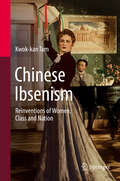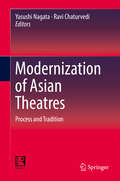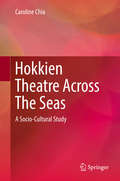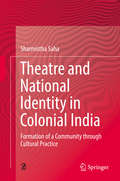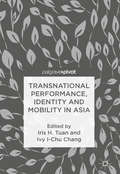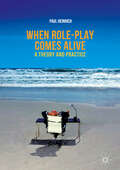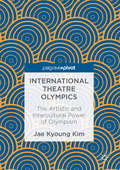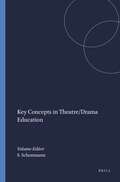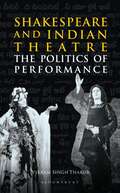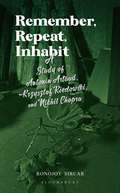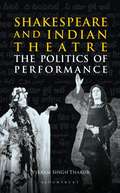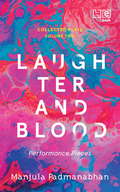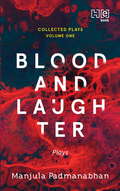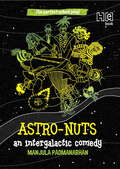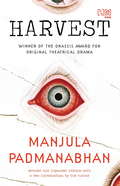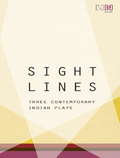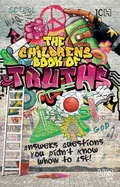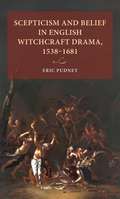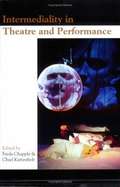- Table View
- List View
Chinese Ibsenism: Reinventions of Women, Class and Nation
by Kwok-kan TamThis book is a study of the relation between theatre art and ideology in the Chinese experimentations with new selfhood as a result of Ibsen’s impact. It also explores Ibsenian notions of self, women and gender in China and provides an illuminating study of Chinese theatre as a public sphere in the dissemination of radical ideas. Ibsen is the major source of modern Chinese selfhood which carries notions of personal and social liberation and has exerted great impacts on Chinese revolutions since the beginning of the twentieth century. Ibsen’s idea of the self as an individual has led to various experimentations in theatre, film and fiction to project new notions of selfhood, in particular women’s selfhood, throughout the history of modern China. Even today, China is experimenting with Ibsen’s notions of gender, power, individualism and self.Kwok-kan Tam is Chair Professor of English and Dean of Humanities and Social Science at the Hang Seng University of Hong Kong. He was Head (2012-18) and is currently a member of the International Ibsen Committee, University of Oslo. He is a Foundation Fellow of the Hong Kong Academy of the Humanities. He has held teaching, research and administrative positions in various institutions, including the East-West Center, the Chinese University of Hong Kong and the Open University of Hong Kong. He has published numerous books and articles on Ibsen, Gao Xingjian, modern drama, Chinese film, postcolonial literature, and world Englishes. His recent books include Ibsen, Power and the Self: Postsocialist Experimentations in Stage Performance and Film (2019), The Englishized Subject: Postcolonial Writings in Hong Kong, Singapore and Malaysia (2019), and a co-edited volume Fate and Prognostication in the Chinese Literary Imagination (2019).
Modernization of Asian Theatres: Process and Tradition
by Yasushi Nagata Ravi ChaturvediThis volume focuses on the theatre history of Asian countries, and discusses the specific context of theatre modernization in Asia. While Asian theatre is one of the primary interests within theatre scholarship in the world today, knowledge of Asian theatre history is very limited and often surprisingly incorrect. Therefore, this volume addresses a major gap in contemporary theatre studies. The volume discusses the conflict between tradition and modernity in theatre, suggesting that the problems of modernity are closely related to the idea of tradition. Although Asian countries preserved the traditional form and values of their respective theatres, they had to also confront the newly introduced values or mechanisms of European modernity. Several papers in this volume therefore provide critical surveys of the history of theatre modernization in Asian countries or regions—Japan, Korea, Taiwan, Hong Kong, India Malaysia, Singapore, and Uyghur. Other papers focus on specific case studies of the history of modernization, discussing contemporary Taiwanese performances, translations of modern French comedy into Chinese, the modernization of Chinese Xiqu, modern Okinawan plays, Malaysian traditional performances, Korean national theatre, and Japanese plays during World War II. Renowned academics and theatre critics have contributed to this volume, making it a valuable resource for researchers and students of theatre studies, literature, and cultural studies.
Hokkien Theatre Across The Seas: A Socio-Cultural Study
by Caroline ChiaThis book adopts a refreshing approach by examining Hokkien theatre in a region connected by maritime networks, notably southern Fujian, Taiwan, Kinmen and Singapore. It considers how regional theatre is shaped by broader socio-cultural and political contexts and the motivation to stay relevant in an era of modernisation and secularisation. Political domains are often marked out by land boundaries, but the sea concept denotes fluidity, allowing theatrical forms to spread across these ‘land-bounded’ societies and share a common language and culture."This is an insightful theatrical study on the web of Chinese cultural networks in southern China and Singapore, and by extension, between China and Southeast Asia in the twentieth century and beyond. Using diverse sources in multiple languages and extensive field ethnography, this is a ground-breaking study which is both didactic and inspiring."- Lee Tong Soon, author of Chinese Street Opera in Singapore (University of Illinois, 2009)."Focusing on Hokkien theatre, this book offers new insights into how Chinese performing art responds to geographical, temporal, and social changes. Historical sources in different languages are widely used to give access to the cultural characteristics of Hokkien theatre, offering valuable ethnographic reports on the contemporary practices of Hokkien theatre in Taiwan, Kinmen, and Singapore. The book comments on the changing ritualistic significance of Hokkien theatre, and help us understand how societies remember the past of a performing tradition, and shape its present."- Luo Ai Mei, Co-Editor of A Preliminary Survey of the Cantonese Eight Song Cycles in South China: History and Sources (2016)
Theatre and National Identity in Colonial India: Formation Of A Community Through Cultural Practice
by Sharmistha SahaThis book critically engages with the study of theatre and performance in colonial India, and relates it with colonial (and postcolonial) discussions on experience, freedom, institution-building, modernity, nation/subject not only as concepts but also as philosophical queries. It opens up with the discourse around ‘Indian theatre’ that was started by the orientalists in the late 18th century, and which continued till much later. The study specifically focuses on the two major urban centres of colonial India: Bombay and Calcutta of the 19th and early 20th centuries. It discusses different cultural practices in colonial India, including the initiation of ‘Indian theatre’ practices, which resulted in many forms of colonial-native ‘theatre’ by the 19th century; the challenges to this dominant discourse from the ‘swadeshi jatra’ (national jatra/theatre) in Bengal, which drew upon earlier folk and religious traditions and was used as a tool by the nationalist movement; and the Indian People’s Theatre Association (IPTA) that functioned from Bombay around the 1940s, which focused on the creation of one national subject – that of the ‘Indian’. The author contextualizes the relevance of the concept of ‘Indian theatre’ in today’s political atmosphere. She also critically analyses the post-Independence Drama Seminar organized by the Sangeet Natak Akademi in 1956 and its relevance to the subsequent organization of ‘Indian theatre’. Many theatre personalities who emerged as faces of smaller theatre committees were part of the seminar which envisioned a national cultural body. This book is an important contribution to the field and is of interest to researchers and students of cultural studies, especially Theatre and Performance Studies, and South Asian Studies.
Transnational Performance, Identity and Mobility in Asia
by Iris H. Tuan Ivy I-Chu ChangThis pivot considers the history, methodology and practice of Asian theatre and investigates the role of Asian theatre and film in contemporary transnational Asian identities. It critically reviews the topics of transnationalism and intercultural political difference, arguing that the concept of Transnational Asian theatre or 'TransAsia' acan promote cultural diversity and social transformation. The book notably offers an understanding of theatre as a cultural laboratory, a repository for diverse histories and a forum for intercultural dialogue, allowing for a better understanding of sociocultural patterns surrounding transnational Asian identity and mobility.
Transnational Performance, Identity and Mobility in Asia
by Iris H. Tuan Ivy I-Chu ChangThis pivot considers the history, methodology and practice of Asian theatre and investigates the role of Asian theatre and film in contemporary transnational Asian identities. It critically reviews the topics of transnationalism and intercultural political difference, arguing that the concept of Transnational Asian theatre or 'TransAsia' acan promote cultural diversity and social transformation. The book notably offers an understanding of theatre as a cultural laboratory, a repository for diverse histories and a forum for intercultural dialogue, allowing for a better understanding of sociocultural patterns surrounding transnational Asian identity and mobility.
When role-play comes alive: A Theory and Practice
by Paul HeinrichThis book harnesses the theory and practice of dramatic arts for the applied use in communication education. It introduces readers to educational role-play and how to use it, arguing that complete immersion is crucial to successful learning. Educational role-play sprang into life in many places including the medical world in the 1960s. Now, fifty years later, the field has grown exponentially across the world. Heinrich discusses how through role play interactions become more authentic, discussion becomes more focused and people take risks, and grow. Early chapters in Part I focus on theory, show how and why role-play works, and introduce the key performative factors of aesthetic distance, defamiliarization, framing, and focus that produce its dynamism. Chapters in Part II discuss how these ideas inform every aspect of role-play practice, offer practical guidance on designing and running scenarios, how to be more confident and mindful as player or facilitator, and provide a wide array of techniques to handle challenging situations. Most of the examples are drawn from medical communication, but the insights and techniques are equally applicable to other fields such as business, law, policing, and the military. The book will be of interest to educators, workplace trainers and managers, facilitators, role-play actors, and scholars interested in role-play performance.
International Theatre Olympics: The Artistic and Intercultural Power of Olympism
by Jae Kyoung KimThis pivot examines how the Theatre Olympics, born in 1995, have served to enrich each host country’s culture, community, and foreign relations. Looking at the host country’s political, social, and cultural circumstances, it considers how the festival expands the notion of Olympism beyond its application to the Olympic Games, expressing the spirit of Olympism and interculturalism in each country’s distinct cultural language.It also emphasizes the festival’s development over the twenty years of its existence and how each festival’s staging has reflected the national identity, theatre tradition, and cultural interest of the hosting country at that time, as well as how each festival director’s artistic principle has attempted to accomplish cultural exchange through their productions.
Key Concepts In Theatre/drama Education (PDF)
by Shifra SchonmannKey Concepts in Theatre/Drama Education provides the first comprehensive survey of contemporary research trends in theatre/drama education. It is an intriguing rainbow of thought, celebrating a journey across three fields of scholarship: theatre, education and modes of knowing. Hitherto no other collection of key concepts has been published in theatre /drama education. Fifty seven entries, written by sixty scholars from across the world aim to convey the zeitgeist of the field. The book's key innovation lies in its method of writing, through collaborative networking, an open peer-review process, and meaning-making involving all contributors. Within the framework of key-concept entries, readers will find valuable judgments and the viewpoints of researchers from North and South America, Europe, Asia, Africa, New Zealand and Australia. The volume clearly shows that drama/theatre educators and researchers have created a language, with its own grammar and lucid syntax. The concepts outlined convey the current knowledge of scholars, highlighting what they consider significant. Entries cover interdependent topics on teaching and learning, aesthetics and ethics, curricula and history, culture and community, various populations and their needs, theatre for young people, digital technology, narrative and pedagogy, research methods, Shakespeare and Brecht, other various modes of theatre and the education of theatre teachers.
Shakespeare and Indian Theatre: The Politics of Performance
by Vikram Singh ThakurThis book looks at adaptations, translations and performance of Shakespeare's productions in India from the mid-18th century, when British officers in India staged Shakespeare's plays along with other English playwrights for entertainment, through various Indian adaptations of his plays during the colonial period to post-Independence period. It studies Shakespeare in Bengali and Parsi theatre at length. Other theatre traditions, such as Marathi, Kannada, Malayalam and Hindi, have been included. The book dwells on the fascinating story of the languages of India that have absorbed Shakespeare's work and have transformed the original educated Indian's Shakespeare into the popular Shakespeare practice of the 19th and 20th centuries, and the unique urban-folkish tradition in postcolonial India.
Remember, Repeat, Inhabit: A Study of Antonin Artaud, Krzysztof Kieslowski and Nikhil Chopra
by Ronojoy SircarRemember, Repeat, Inhabit looks at three questions in relation to the idea of the viewer: What happens when one reads someone else's reading of someone else?What happens when something repeats itself in Kieslowski's work?Is there a possibility of an ontology of space?The book attempts to understand the idea of 'viewing' from the inside, not simply as an ontological premise but definitely affected by it. Three differing contexts are looked at-a French madman's notion of the 'self', a Polish filmmaker's notion of the 'everyday' and an Indian performance artist's notion of 'memory'. Through these on-the-surface contrasting artists and texts, a particular idea of a 'viewer' emerges. This viewer is the key to an understanding of something almost elemental in the nature of the idea of 'viewing' in the contemporary context of twenty-first-century Delhi.
Shakespeare and Indian Theatre: The Politics of Performance
by Vikram Singh ThakurThis book looks at adaptations, translations and performance of Shakespeare's productions in India from the mid-18th century, when British officers in India staged Shakespeare's plays along with other English playwrights for entertainment, through various Indian adaptations of his plays during the colonial period to post-Independence period. It studies Shakespeare in Bengali and Parsi theatre at length. Other theatre traditions, such as Marathi, Kannada, Malayalam and Hindi, have been included. The book dwells on the fascinating story of the languages of India that have absorbed Shakespeare's work and have transformed the original educated Indian's Shakespeare into the popular Shakespeare practice of the 19th and 20th centuries, and the unique urban-folkish tradition in postcolonial India.
Laughter and Blood: Performance Pieces
by Manjula PadmanabhanConjoined triplets on a blind date. A lesson in human reproduction by a manic-prudish teacher. A heart-stopping game of cards. An instrument that tunes in to the music of our bodies’ organs. Collected Plays brings together, in a much-anticipated series, the dramatic works of Onassis prize-winning playwright and author Manjula Padmanabhan. Laughter and Blood, the second volume, presents within its covers Padmanabhan’s short performance pieces. From The Sextet and Ladies’ Night to Hidden Fires and Blind Date, these wildly inventive, subversive and often chilling plays introduce readers to the intrigues of inverted power structures, tantalizingly suggestive interactions and powerful voices from the fringe. With new introductions to the works that affirm the relevance of the themes of the plays, this collection showcases the playwright’s mastery of her art and reconfirms her standing among the leading dramatists of our time.
Blood and Laughter: Plays
by Manjula PadmanabhanA neighbourhood that turns a blind eye to a recurring gruesome crime. A game show that puts the lives of its contestants on the line. An insidious tableau that pits three artists against each other. A world where organs of the poor are commercially harvested for the rich. Collected Plays brings together, in a much-anticipated series, the dramatic works of Onassis Prize-winning playwright and author Manjula Padmanabhan. Blood and Laughter, the first volume, presents within its covers Padmanabhan’s full-length plays – including the three-times cinematized Lights Out, the previously unpublished Mating Game Show and Artist’s Model, and the award-winning Harvest – all known for their masterful portrayal of the dilemmas of morality, relationships and the idea of justice. Horror, anticipation and chilling realism mark each of these works, drawing readers and audiences alike to the edge of their seats. With new introductions to the works that affirm the relevance of the themes of the plays, this collection showcases the playwright’s mastery of her art and reconfirms her standing among the leading dramatists of our time.
Remember, Repeat, Inhabit: A Study of Antonin Artaud, Krzysztof Kieslowski and Nikhil Chopra
by Ronojoy SircarRemember, Repeat, Inhabit looks at three questions in relation to the idea of the viewer: What happens when one reads someone else's reading of someone else?What happens when something repeats itself in Kieslowski's work?Is there a possibility of an ontology of space?The book attempts to understand the idea of 'viewing' from the inside, not simply as an ontological premise but definitely affected by it. Three differing contexts are looked at-a French madman's notion of the 'self', a Polish filmmaker's notion of the 'everyday' and an Indian performance artist's notion of 'memory'. Through these on-the-surface contrasting artists and texts, a particular idea of a 'viewer' emerges. This viewer is the key to an understanding of something almost elemental in the nature of the idea of 'viewing' in the contemporary context of twenty-first-century Delhi.
Bharat Ava Vishva Ka Bhugol: भारत एवं विश्व का भूगोल
by माजिद हुसेनसंघ लोक सेवा आयोग (UPSC) ने वर्ष 2013 में सिविल सेवा मुख्य परीक्षा हेतु अपने परीक्षा पैटर्न और पाठ्यक्रम को पुनरीक्षित किया था। वर्ष 2011 में प्रारंभिक परीक्षा के आकार और पैटर्न में भी परिवर्तन किया गया था। पुनरीक्षित पाठ्यक्रम और विद्यार्थियों से प्राप्त उत्साहवर्धक प्रतिक्रिया के आलोक में “भारत एवं विश्व का भूगोल” पुस्तक को विभिन्न सरकारी और गैर-सरकारी प्रकाशनों से प्राप्त नवीनतम आंकड़ों और सूचनाओं को ध्यानपूर्वक सम्मिलित कर पुनरीक्षित और अद्यतन किया गया है। इस पुनरीक्षित संस्करण में भूगोल, पर्यावरण और पारिस्थितिकी तथा आपदा प्रबंधन के लगभग सभी विषयों को शामिल किया गया है, जोकि प्रारंभिक परीक्षा और मुख्य परीक्षा के सामान्य अध्ययन पत्र—II, III और —IV में निर्धारित हैं।
Indian Art and Culture: भारतीय कला एवं संस्कृति
by Nitin SindhaniaNitin Singhania holds a Bachelor’s and Master’s Degree in Economics from Presidency College, Kolkata. He is also a Chartered Accountant and Company Secretary. He worked in Coal India Ltd before joining the Indian Administrative Services (IAS) in 2013 in the West Bengal cadre. He has a deep interest and expertise in Indian Art and Culture and is known for guiding students in this area. Presently he is posted as Sub-Divisional Officer in Purba Bardhaman district of West Bengal. Earlier, he has worked as the Assistant Secretary, Ministry of Home Affairs, Government of India and as Assistant Collector in Burdwan, West Bengal. His bestselling title Indian Art and Culture is a favourite among students preparing for the Civil Services Examination.
Astro-Nuts: An Intergalactic Drama (IN #Gurgaon)
by Manjula PadmanabhanIt’s the General Assembly of the Galactic Union, and the first delegation from SOL-3 is desperate to present its case before it. The crazily assorted contingent of the third planet of the star SOL-aka Earth - carries with it all its baggage of opposing opinions, narrow views, squabbles, secrets and conspiracies. Toilets, whales, racism, food, body size...everything is cause for shouting matches and name-calling as the representatives – 11 human and six non-human – each wait to hold forth. To their shock and horror, they come to know that only one delegate will appear before the Assembly. Fuss and fireworks erupt among the elected leaders of the delegation, while five rebels plot a blow-up of a different kind. Uncertainty rules: Who is that one chosen speaker going to be and what is he, she or it going to say? Will SOL-3 be stuck with being ‘ecologically unfit for full membership to the Union’, or be seen as having ‘potential for change’? Is this interplanetary jamboree an insult, an opportunity, or a test? Among telepathic cookies and high-tech waste disposal, Manjula Padmanabhan sets up a colourfully cast, witty and thought-provoking stage spectacle sure to leave its audience and readers amused, inspired and applauding.
Bhartiya Arthvyastha: भारतीय अर्थव्यवस्था
by संजीव वर्मायूपीएससी पाठ्यक्रम के नए पैटर्न के आधार पर पूरी तरह से संशोधित और अद्यतन संस्करण - अब 4 व्यापक खंडों में संरचित- ए। घरेलू अर्थव्यवस्था, बी। बाहरी क्षेत्र- बाहर की ओर, सी। ग्लोबल इकोनॉमी और आउटलुक और डी। इंडियन इकोनॉमी रिविजिटेड, आउटलुक और चुनौतियां। पुस्तक आर्थिक मुद्दे को महान वैचारिक स्पष्टता के साथ रेखांकित करने और आवेदन के हिस्से में लाने और वर्तमान समय में इसकी प्रासंगिकता का प्रयास है। नई पीढ़ी के छात्रों को अर्थव्यवस्था को सही परिप्रेक्ष्य में समझने का प्रयास। निम्नलिखित अध्यायों में अर्थव्यवस्था में भारत सरकार द्वारा शुरू की जा रही नई अवधारणाओं, नीतियों और कार्यान्वयन को अद्यतन करने और जोड़ने के दौरान सीखने की आसानी को ध्यान में रखा गया है: 1. मुख्य विशेषताएं: नया भारत 2. गरीबी और सामाजिक क्षेत्र 3. सरकार फाइनेंसिंग और बैंकिंग 4. विदेश व्यापार नीति ... कुछ का नाम दिया जाना है निम्नलिखित वर्गों को नए संस्करण में डाला गया है: 1. भारतीय अर्थव्यवस्था तारकीय प्रदर्शन 2. भारत की अर्थव्यवस्था भर में फैले JAM 3. माल और सेवा कर: एक प्रगतिशील कर व्यवस्था 4 निति आयोग: द प्रीमियर पॉलिसी थिंक टैंक 5. स्टार्टअप इंडिया: विंग्स टू द स्काई ऊपर 6. डिमॉनेटाइजेशन पॉलिसी: काले धन के खिलाफ सर्जिकल स्ट्राइक को कुछ ही समय में अवधारणा (ओं) को सीखने और समझने की सुविधा के लिए आरेखों के साथ समृद्ध किया गया है।
Harvest
by Manjula Padmanabhan‘A modern morality play. A bitter, savagely funny vision of the cannibalistic future that awaits the human race...’ – OUTLOOK A searing portrayal of a society bereft of moral and spiritual anchors, Manjula Padmanabhan’s fifth play, Harvest, won the Onassis Award for Original Theatrical Drama in 1997, the first year in which the prize was awarded. Following its international premiere in Greece in 1999, the play has been performed over the years by theatre groups, both amateur and professional, around the world. A dark satire, Harvest tells the story of an impoverished family and the Faustian contract they enter into with a shadowy international corporation: fabulous wealth in exchange for the organs of one of its members. As Ginni, the glamorous American woman who hopes to receive the organs, invades their one-room home via an interactive video device the play lays bare the transactional nature of human relationships – even the most intimate ones. This edition includes, for the first time, a gender-reversed version of the play – an experiment by the author that provides startling insight into the stereotypes and societal constructs ingrained deep in the human psyche and, indeed, into how we perceive gender.
Sightlines
by Rage Theatre ProductionsEvery three years, over the last decade, the Mumbai-based theatre group RAGE - in collaboration with the Royal Court Theatre in London - organizes the Writers' Bloc Workshop. Offering a much-needed artistic retreat to playwrights, this workshop allows aspiring and professional playwrights a chance to perfect their scripts with established actors and professionals from within the industry. Apart from encouraging them to break free from the rigid boundaries of English theatre in India to fashion their own idiom, the workshop also ensures its playwrights access to the final pilgrimage of any script - the stage. As it stands today, the infamous debate on whether an Indian play written in English mirrors a bona fide Indian reality is no longer relevant. Using a vocabulary that is entirely their own - 'unaffected, homegrown and lyrical' - the three plays in this collection convincingly capture the peculiar accents and the particular chaos of our times. Rahul Da Cunha's 'Pune Highway' is set in a seedy hotel room where three friends, having just witnessed the gruesome murder of a fourth, are holed up, desperate to escape its consequences; Ram Ganesh Kamatham's 'Crab' takes a hard-talking look at the existential angst of a new generation, looking at once for purpose and an emotional safe place from an increasingly concrete world; Farhad Sorabjee's 'Hard Places' explores the unspoken borders that divide us from our loved ones and the violently disputed borders between countries. Bridging the invisible lines between the personal and the political and taking us to places and situations a little less familiar and safer than our own, these brilliantly written plays can be performed, and empathized with, across territories.
THE CHILDREN’S BOOK OF TRUTHS
by VariousWhy do people fight? What’s the use of education? Is India rich or poor? Why are stories important? Can anyone be a leader? Is science only about exams? Will planting trees save the earth? Growing up throws up a lot of questions – about people, events and the world around us. Sometimes the answers are in simple black and white, wrong and right, but mostly they are not. In this book, ten truth-explorers and idea-shapers share with you their thought-provoking views on important topics close to your heart and mind. Drawing on their experiences, they help you see many different sides of a question and arrive at the most important truth – your own conclusion, your own interpretation, your own answer. Subroto Bagchi on Leadership Shaheen Mistri on Education Vivek Menon on Nature Meeta Kumar on the Economy Manjula Padmanabhan on Gender Bias Omair Ahmad on Conflict Bibek Debroy on God and Religion Roopa Pai on Stories Hartosh Singh Bal on Science and Maths Kapil Dev on Sports
Scepticism and belief in English witchcraft drama, 1538–1681 (Lund University Press)
by Eric PudneyWinner of the 2019 Warburg Prize from the Royal Swedish Academy of Letters, History and Antiquities for an outstanding work of literary historyThis is a study of the representation of witches in early modern English drama, organised around the themes of scepticism and belief. It covers the entire early modern period, including the Restoration, and pays particular attention to three plays in which witchcraft is central: The Witch of Edmonton (1621), The Late Lancashire Witches (1634) and The Lancashire Witches (1681). Always a controversial issue, witchcraft has traditionally been seen in terms of a debate between ‘sceptics’ and ‘believers’. This book argues instead that, while the concepts of scepticism and belief are central to an understanding of early modern witchcraft, they are more fruitfully understood not as static and mutually exclusive positions within the witchcraft debate, but as rhetorical tools used by both sides.
Scepticism and belief in English witchcraft drama, 1538–1681 (Lund University Press)
by Eric PudneyWinner of the 2019 Warburg Prize from the Royal Swedish Academy of Letters, History and Antiquities for an outstanding work of literary history This is a study of the representation of witches in early modern English drama, organised around the themes of scepticism and belief. It covers the entire early modern period, including the Restoration, and pays particular attention to three plays in which witchcraft is central: The Witch of Edmonton (1621), The Late Lancashire Witches (1634) and The Lancashire Witches (1681). Always a controversial issue, witchcraft has traditionally been seen in terms of a debate between ‘sceptics’ and ‘believers’. This book argues instead that, while the concepts of scepticism and belief are central to an understanding of early modern witchcraft, they are more fruitfully understood not as static and mutually exclusive positions within the witchcraft debate, but as rhetorical tools used by both sides.
Intermediality In Theatre And Performance (PDF)
by Freda Chapple Chiel Kattenbelt"Intermediality": the incorporation of digital technology into theatre practice, and the presence of film, television and digital media in contemporary theatre is a significant feature of twentieth-century performance. Presented here for the first time is a major collection of essays, written by the "Theatre and Intermediality Research Group" of the" International Federation for Theatre Research," which assesses" intermediality in theatre and performance. " The book draws on the history of ideas to present a concept of intermediality as an" integration of thoughts and medial processes," and it locates intermediality at the" inter-sections situated in-between" the performers, the observers and the confluence of media, medial spaces and art forms involved in performance at a particular moment in time. Referencing examples from contemporary theatre, cinema, television, opera, dance and puppet theatre, the book puts forward a thesis that the intermedial is a space where the boundaries soften and we are" in-between and within a mixing of space, media and realities, with theatre providing the staging space for intermediality. " The book places theatre and" performance" at the heart of the 'new media' debate and will be of keen interest to students, with clear relevance to undergraduates and post-graduates in Theatre Studies and Film and Media Studies, as well as the theatre research community.
